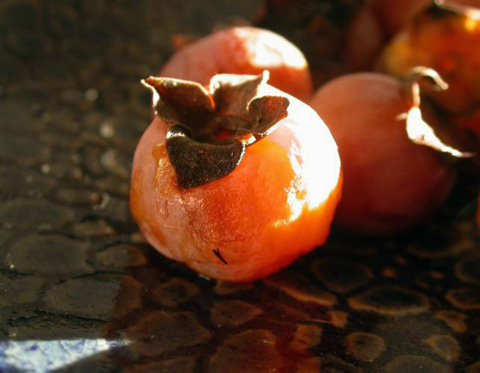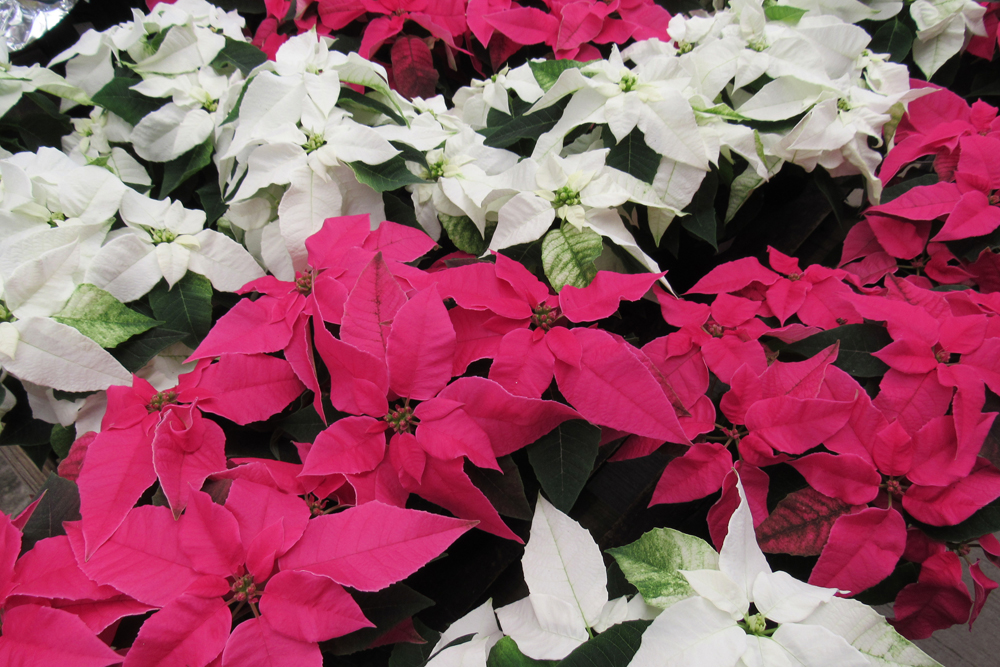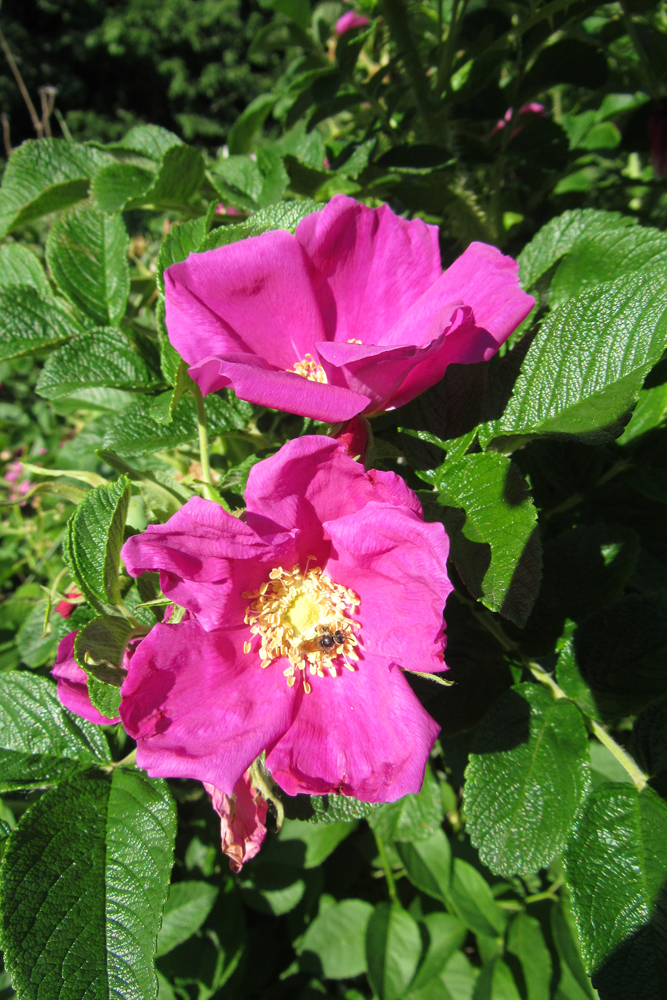Sassafras and Persimmon

Sassafras and persimmon are both trees native to North America. Cornell Botanic Gardens recently published an article by Pam Shade about sassafras (Sassafras albidum). Shade writes the praises of this native tree which can be found in deciduous woodlands in the northeast and southeast United States. Sassafras trees grow much bigger farther south, where they can reach up to 80 feet or more in height. She notes sassafras does grow in small numbers in several of the natural areas at Cornell Botanic Gardens.
The tree produces leaves in three shapes: oval, mitten, and mitten with both a thumb and pinky finger. Leaves grow in clusters at the end of twigs. Sassafras loves moist, well-drained sandy loams and is intolerant of shade. It is a pioneer species that will sprout in abandoned fields, along fence rows, or following fires. Clumps of sassafras spread by underground runners from parent trees.
Shade notes that sassafras was used extensively by the Indigenous people of North America. Leaves, root bark, and wood were utilized in many ways. The cinnamon-colored bark which covers the roots of the tree contains safrole.
With a spicy scent redolent of star anise, cinnamon, citrus, and vanilla, it was used to flavor teas, soft drinks (root beer), and to scent candles, soaps, and perfumes. Safrole is now considered a carcinogen and was banned for human consumption in the 1960s by the Food and Drug Administration.
Sassafras is dioecious – there are male and female trees. Female trees bloom in March and April, producing small, yellow flowers. Dark blue berries follow, which are attached to vivid red pedicels into the fall. Leaves turn vibrant colors in the fall – yellow, burgundy, crimson and orange. Sassafras can be hard to transplant, as the saplings are attached to the parent plant by runners.
Persimmon – American varieties of persimmon have smaller fruits than the Japanese or Asian persimmons commonly found in grocery stores. They are native to the eastern and central U.S. and are hardy to Zone 4; minus 25 degrees F. They like full sun best, but will grow in light shade. Plant them in a slightly acidic, well-drained soil and provide ample space. Persimmons can grow up to 50 feet tall with a spread of 20 to 30 feet. They do have a deep taproot, which can make transplanting difficult.
According to Penn State Extension, American persimmons grow slowly. A seedling tree may take as many as four to nine years to bear fruit. Like sassafras, most persimmons are dioecious, with male and female flowers on separate trees. Creamy white flowers are bell-shaped and the rounded fruit generally ripens in late autumn. The leathery skin has a distinctive calyx that remains on the fruit even after harvest. The fruit color varies from yellow to orange. Dark green leaves turn brilliant yellow and orange in autumn, and the blocky-grey bark adds outstanding winter interest. If you attempt to grow persimmons – which can be used in baked goods, ice cream, sorbet, pudding, and more – pick a spot where the ripening fruit will not be an issue. Young trees should be pruned to develop a strong branching structure to help the trees support the weight of fruit in later years. They respond well to pruning and can be espaliered or trained into hedges.
Penn State recommends three varieties. Prok is a grafted, self-pollinating variety that bears huge crops of sweet, juicy fruit that begins ripening in mid-September. Yates is grafted and self-pollinating. This variety is fast-growing and has few pest or disease problems. The ripe fruit has a sweet, apricot flavor and ripens in early September. Yates is also cold-hardy and heat-tolerant. Elmo ripens in October and November and is a reliable heavy producer.

Photo courtesy of Missouri Dept. of Conservation






